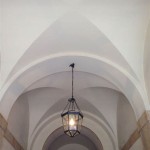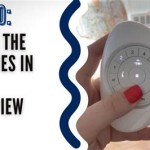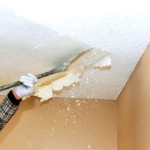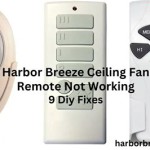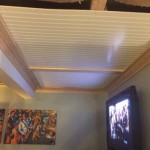Exploring the Diverse World of Ceiling Design
Ceiling design, often an overlooked aspect of interior design, plays a crucial role in shaping the aesthetic appeal and functionality of a space. A well-designed ceiling can significantly impact the perceived height of a room, improve acoustics, enhance lighting, and contribute to the overall atmosphere. From simple painted surfaces to intricate architectural installations, the possibilities for ceiling design are vast and varied. Understanding the different types of ceiling designs is essential for architects, interior designers, and homeowners seeking to create visually stunning and comfortable environments.
This article delves into various types of ceiling designs, exploring their characteristics, applications, and benefits. By understanding these options, individuals can make informed decisions about selecting a ceiling design that best meets their specific needs and aesthetic preferences. Furthermore, this exploration will highlight the interplay between ceiling design and other elements of interior design, such as lighting, wall finishes, and furniture arrangements.
Suspended Ceilings: A Versatile Solution
Suspended ceilings, also known as dropped ceilings or false ceilings, are a prevalent choice in both commercial and residential settings. They consist of a grid system suspended from the structural ceiling above, into which ceiling tiles or panels are placed. The space between the suspended ceiling and the structural ceiling allows for the concealment of wiring, ductwork, and plumbing, providing easy access for maintenance and repairs. This accessibility is a significant advantage of suspended ceilings.
The materials used for suspended ceiling tiles vary widely, including mineral fiber, fiberglass, metal, and wood. Each material offers different acoustic properties, fire resistance ratings, and aesthetic qualities. Mineral fiber tiles, for instance, are commonly used in offices due to their excellent sound absorption capabilities, while metal tiles can provide a sleek, modern look. The modular nature of suspended ceilings also allows for easy customization and replacement of individual tiles.
Suspended ceilings offer several benefits beyond concealing utilities. They can improve a room's acoustics by absorbing sound waves and reducing reverberation. They can also enhance energy efficiency by creating an insulating layer between the occupied space and the structural ceiling. Moreover, suspended ceilings can be easily integrated with lighting fixtures, such as recessed lights and track lighting, to create a well-lit and visually appealing environment.
Tray Ceilings: Adding Architectural Interest
Tray ceilings are characterized by a recessed central area, creating the illusion of height and adding architectural interest to a room. They are typically constructed by framing a smaller ceiling area above the main ceiling, resulting in a stepped appearance. The recessed area can be painted a different color or texture from the main ceiling to further accentuate the design.
Tray ceilings can be customized to suit a variety of architectural styles, from traditional to modern. In traditional settings, they may feature ornate moldings and trim, while in modern settings, they may be simpler and more minimalist. The shape of the tray can also be varied, ranging from rectangular and square to oval and circular, depending on the room's layout and desired aesthetic.
The lighting options for tray ceilings are diverse, including recessed lights, chandeliers, and cove lighting. Recessed lights can provide general illumination, while chandeliers can serve as a focal point. Cove lighting, which is installed along the perimeter of the tray, creates a soft, ambient glow that highlights the ceiling's architectural details. Tray ceilings can significantly enhance the visual appeal of a room, making it feel more spacious and sophisticated.
Vaulted Ceilings: Maximizing Vertical Space
Vaulted ceilings are characterized by their arched or angled shape, rising to a higher point than a standard flat ceiling. They create a sense of spaciousness and grandeur, making them a popular choice for living rooms, dining rooms, and entryways. There are several types of vaulted ceilings, including barrel vault, groin vault, and cathedral ceiling.
A barrel vault ceiling is a simple, curved arch that extends the length of the room. A groin vault ceiling is formed by the intersection of two barrel vaults at right angles, creating a more complex and visually interesting design. A cathedral ceiling, also known as a pitched ceiling, follows the slope of the roof, creating a dramatic and soaring effect. Cathedral ceilings are commonly found in churches and other large, open spaces.
Vaulted ceilings can be constructed from a variety of materials, including wood, plaster, and drywall. Wood vaulted ceilings can add warmth and texture to a room, while plaster and drywall vaulted ceilings can be painted or textured to match the overall decor. The lighting options for vaulted ceilings include chandeliers, pendant lights, and recessed lights. Chandeliers can serve as a focal point, while pendant lights can provide task lighting over specific areas. Recessed lights can be used to highlight the ceiling's architectural features.
Coffered Ceilings: A Classic and Elegant Design
Coffered ceilings are distinguished by a series of recessed panels, or coffers, that create a grid-like pattern. This design adds depth, texture, and visual interest to a room. Coffered ceilings have been used for centuries in both residential and commercial buildings, and they remain a popular choice for those seeking a classic and elegant look.
The coffers can be square, rectangular, or octagonal, and they can be decorated with moldings, carvings, or other decorative elements. The materials used for coffered ceilings typically include wood, plaster, and drywall. Wood coffered ceilings can add warmth and richness to a room, while plaster and drywall coffered ceilings can be painted or textured to match the overall decor. The size and spacing of the coffers can be adjusted to suit the room's dimensions and desired aesthetic.
The lighting options for coffered ceilings often include recessed lights, chandeliers, and up lighting. Recessed lights can provide general illumination, while chandeliers can serve as a focal point. Up lighting, which is installed within the coffers, can highlight the ceiling's architectural details and create a soft, ambient glow. Coffered ceilings can enhance the architectural character of a room, adding a touch of sophistication and elegance.
Beam Ceilings: Rustic Charm and Structural Emphasis
Beam ceilings feature exposed beams that run across the ceiling, adding a rustic charm and emphasizing the structural elements of the room. The beams can be made of wood, steel, or other materials, and they can be either decorative or structural. Beam ceilings are commonly found in farmhouses, cabins, and other rustic-style homes.
The beams can be arranged in a variety of patterns, including parallel lines, intersecting lines, or radial patterns. The spacing and size of the beams can be adjusted to suit the room's dimensions and desired aesthetic. Wood beams can be stained or painted to match the overall decor, while steel beams can be left exposed for a more industrial look. The beams can also be adorned with decorative elements, such as carvings or metal accents.
The lighting options for beam ceilings often include pendant lights, track lighting, and recessed lights. Pendant lights can be hung from the beams to provide task lighting over specific areas, while track lighting can be used to highlight the beams' architectural features. Recessed lights can provide general illumination without detracting from the beams' visual impact. Beam ceilings can add warmth, texture, and character to a room, creating a cozy and inviting atmosphere.
Popcorn Ceilings: A Textured But Outdated Option
Popcorn ceilings, also known as acoustic ceilings or textured ceilings, were a popular choice in residential construction from the 1950s to the 1980s. They are characterized by a bumpy, textured surface that resembles popcorn. While popcorn ceilings were initially valued for their sound-dampening properties and ability to hide imperfections, they are now considered outdated and often detract from a room's aesthetic appeal.
The texture of popcorn ceilings is typically created by spraying a mixture of materials onto the ceiling surface. These materials can include vermiculite, perlite, or polystyrene. In some cases, popcorn ceilings may contain asbestos, a hazardous material that can pose health risks if disturbed. Therefore, it is crucial to have popcorn ceilings tested for asbestos before attempting any removal or renovation.
While popcorn ceilings can provide some sound absorption, their aesthetic drawbacks often outweigh their benefits. They can be difficult to clean, tend to collect dust, and can make a room feel smaller and darker. Removing popcorn ceilings can be a messy and time-consuming process, but it can significantly improve a room's appearance. Options for replacing a popcorn ceiling include skim coating with drywall mud to create a smooth surface, installing a new ceiling material, or adding a decorative ceiling treatment.
Skim Coat Ceilings: Smooth and Modern
Skim coat ceilings offer a smooth, flat, and modern aesthetic. This method involves applying a thin layer of joint compound, often referred to as "mud," over an existing ceiling surface. This creates a seamless and uniform finish that can be painted to match any decor. Skim coating is a popular choice for homeowners looking to update outdated ceilings, such as those with popcorn texture, or to repair imperfections and create a clean, contemporary look.
The process of skim coating requires careful preparation. The existing ceiling surface must be thoroughly cleaned and primed to ensure proper adhesion of the joint compound. Multiple thin coats of mud are applied, each allowed to dry completely before the next coat. Sanding is performed between coats to achieve a perfectly smooth surface. This process demands skill and patience to avoid imperfections such as bumps, ridges, or unevenness. The result is a flawless canvas ready for painting and any desired lighting fixtures.
Skim coat ceilings are versatile and can be implemented in various rooms throughout a home. They are particularly well-suited for modern and minimalist interior designs, as they offer a clean and uncluttered appearance. The smooth surface also reflects light well, making rooms feel brighter and more spacious. While the initial investment of time and effort may be significant, the long-term aesthetic benefits of a skim coat ceiling make it a worthwhile option for many homeowners.
The selection of a ceiling design involves considering various factors, including the room's size, shape, and style, as well as the desired aesthetic and functional requirements. By carefully evaluating these factors and exploring the different types of ceiling designs available, individuals can create spaces that are both visually appealing and functionally efficient.

The 8 Diffe Types Of Ceilings 9wood

The 8 Diffe Types Of Ceilings 9wood

Popcorn Cathedral And More Every Ceiling Type Out There

9 Diffe Types Of Ceiling Design Styles Laqfoil

A Guide To Diffe Types Of Ceiling Designs

What Are The Diffe Types Of Ceilings Bankrate

13 Popular Ceiling Types For Your Home 2024 Guide

A Guide To Diffe Types Of Ceiling Designs
8 Types Of False Ceiling For Home

Top 6 Types Of False Ceiling Materials For Stunning Interior Designs Nerolac
Related Posts

